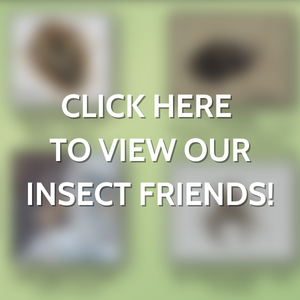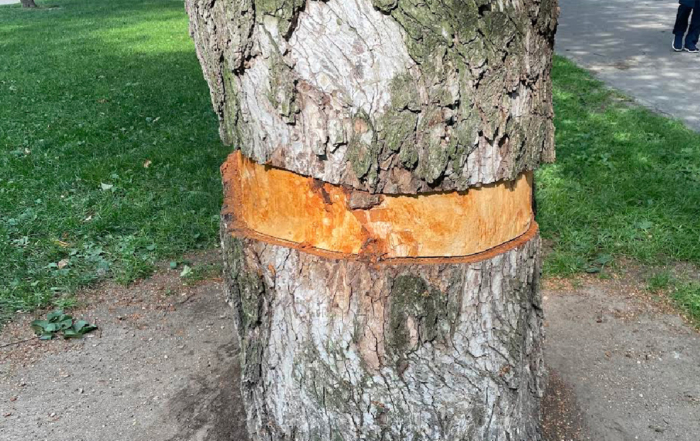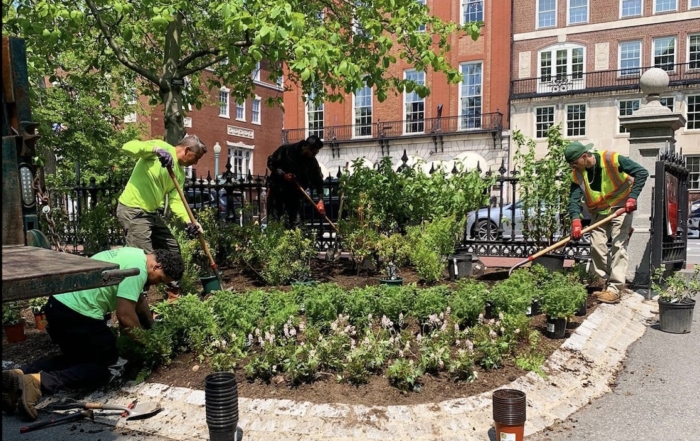TREE CARE
One of the most important roles played by the Friends is the care of the trees in the three parks. The stately and mature specimen trees in the Boston Common, Public Garden, and Commonwealth Avenue Mall—numbering over 1,700—are the “bones” of the parks. The trees define these magnificent green spaces, and contribute aesthetically as well as ecologically to the health and well-being of the city and its inhabitants.
Tress planted a century or more ago need special care. That’s why it’s critical to continue a regular program of planting and maintenance to ensure the vitality of these landscapes for generations to come. Without the significant commitment of funds and expertise, the parks’ trees would suffer irreparable harm from the effects of urban pollution, compaction and disease. For example, without our annual program of treatment to protect against Dutch elm disease, it is likely that none of our majestic elms would be in the parks today.
BACKGROUND
The inability of the city to adequately fund tree care has been an ongoing, pressing problem. Since our formation in 1970, each year has brought another crisis in basic tree care and protection. Despite advocacy for more city funding, it’s been largely up to the private sector to consistently address the seriousness of the situation.
The idea of a fund devoted exclusively to trees dates back to the 1976 bicentennial celebration. That’s when Boston created the Garden Fund to receive gifts for plantings in the Garden. The unspent funds from that effort reverted to the Friends and became the Planting Fund. Today, the Friends has endowment funds for care of the trees in all three parks. They have been built up through annual donations, bequests, and a portion of a $6.5 million capital campaign completed in 2009.
ANNUAL TREE CARE
The tree care work of the Friends is done in close collaboration with the Parks Department. Under the guidance of a consulting arborist, the Friends hires experienced professionals to plant and prune trees each year.
For example, research on the most effective treatments against Dutch elm disease is behind an annual program of injections for the parks’ collection of elms. There is no cure but our ongoing use of new weapons in the battle, and planting of disease-resistant elm hybrids ensures the survival of this tree for years to come. Today the Parks Department promptly removes ailing trees to prevent spread of the disease.
The Friends also initiates tree fertilization programs and provides soil-compaction relief. Fertilization has had a significant positive impact on the growth of mature trees in the parks. Soil compaction is a major threat to tree health in urban parks, reducing oxygen available for tree roots as well as water absorption capacity. A 2011 pilot air spading program in the Mall—the largest such pilot in the region—was conducted to relieve compacted soil, cut girdling roots, and learn about the effectiveness of this process. Other procedures are being tested on the Mall and the Common to determine the most effective methods.
INSECT & SPIDER FRIENDS AT WORK
As you know, providing routine maintenance such as pruning, fertilizing, pest management and weeding, all play an important role in keeping our trees healthy and strong.
 It may come as a surprise to know that there are even more workers that go unseen by the hundreds of people that pass through our parks each day. Hidden among the trees are insects and spiders providing invaluable services that contribute to the strength and beauty of our trees. By reducing pest insects, decomposing organic matter, or even serving as food for other wildlife, these tiny “Friends at Work” are necessary participants in our tree care program.
It may come as a surprise to know that there are even more workers that go unseen by the hundreds of people that pass through our parks each day. Hidden among the trees are insects and spiders providing invaluable services that contribute to the strength and beauty of our trees. By reducing pest insects, decomposing organic matter, or even serving as food for other wildlife, these tiny “Friends at Work” are necessary participants in our tree care program.
Some of the best insect workers are:
Green Lacewing Chrysoperla rufilabris
Of the many beneficial predators that live and work in the parks, the Green Lacewing, Chrysoperla rufilabris, is fairly common and can always be found on the linden trees. The adults are light green with delicate lacy wings. The larvae are long brown and white insects that resemble alligators. While the adult lacewing feeds on nectar, pollen, and honeydew, it is the larvae, the young stage, that consumes a variety of soft bodied pest insects such as aphids, caterpillars and beetles.
Twice-Stabbed Ladybug Chilocorus stigma
The Twice- stabbed ladybug gets its unusual common name because of the two red dots on the center of each wing. Twice-stabbed ladybug adults and larvae may be tiny but both are exceptional predators. They each feed on a wide variety of pest insects, including scale insects that can sometimes be difficult to control.
Tan Jumping Spider Platycryptus undatus
One of North America’s most attractive spiders, the tan jumping spider, resides in many of the trees in our parks and is most often seen on vertical surfaces such as tree trunks. Instead of spinning a web to catch its prey, the tan jumping spider actively hunts down pest insects such as flies and moths. With excellent vision for assessing and tracking their prey, the tan jumping spider has a reputation for being curious about people and will spend time studying a person that might be nearby.
Others are listed on the illustration. Click the square above to view.
Beneficial Insect Reports
Read our Beneficial Insect Reports, prepared by consulting Entomologist Christine Helie: 2022 2021 2020 2019 2018
TREE INVENTORY
In 2010 the Friends completed the first computerized inventory of all trees in the three parks. This invaluable document gives the Friends and Parks Department a tool to document and manage the care of the parks’ trees. With this database we can identify each tree’s location, planting date, condition, and treatment over time.
TREE SPONSORSHIP PROGRAM
Offered now for decades, our tree sponsorship program allows individuals to sponsor new or existing trees in the parks in honor of loved ones or an occasion. A tree label (Public Garden only) or plaque customized with a personal message is placed at the tree site. For more information, call 617-723-8144.
Farewell to Friends | August 16, 2023
With 1,700 trees in the three parks, tree removals are a regular and healthy part of the parks care cycle. [...]
The Impact YOU Make | July 18, 2023
For more than 50 years, Friends have cared for the Boston Common, the Public Garden, and the Commonwealth Avenue Mall, [...]
“I’m New Here!” – Nineteen New Trees for the #Threeparks | July 17, 2023
This year we planted an assortment of new trees in the three parks, and the species of trees were carefully [...]




